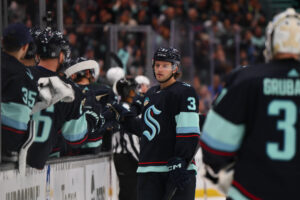The NHLPA has rejected an offer from the league’s owners to allow them to play in the 2018 Winter Olympics. The owners wanted to extend the current collective bargaining agreement for three more years.
NHL Players Reject Owners Offer to Extend CBA
This leaves the participation of NHL players in the upcoming Pyeongchang games in question. Both the players and the owners are hesitant to commit to the games because they want the IOC and IIHF to continue paying for the expenses, as they have for the past five Olympics.
NHL deputy commissioner Bill Daly has gone on the record saying that a decision would come before the end of this year, but the league has until Jan. 15, 2017 should it need the extra time to work out a deal with the IOC and IIHF.
The matter of the Olympics is just one of the issues in this situation, however, and arguably the minor of the two. What’s seemingly more important is the impact on the NHL’s CBA.
The Current State of Labor in the NHL
The current CBA runs through September 15, 2022, but either party can opt out of it after eight years. This makes January 13, 2021 the earliest date the current labor peace could be interrupted. Given this latest exchange, it’s likely that both parties will take that option when the time comes.
This offer made by the owners was one that the players were highly unlikely to accept, and the owners had to have been aware of that when they made it. It’s a classic negotiation strategy of making your first offer ridiculously high. That allows a negotiating party to give the illusion of compromise, and in the off-chance the other party actually accepts the offer, gives the negotiator an opportunity to come away with a huge win.
It’s simply not in the best interest of the players to blindly agree to extend the current CBA through 2025, when so much can change in the next nine years. The players are reportedly unhappy with the current escrow system, which might be altered in the next CBA.
Escrow in the Current CBA
Under the terms of the current CBA, NHL players pay at least 15% of their salaries throughout the season into an escrow account. The account acts like an insurance policy for the owners against coming up short at the end of each season. The current CBA gives the owners a 43% cut of total league revenue, and escrow is there to ensure that they get it. If other revenue streams don’t add up to the 43% at season’s end, the owners take what they need to make up the difference from escrow.
If the owners already have their cut, then the money in escrow returns to the players. Additionally, if the owners’ cut of total revenue from sources other than escrow figures to be more than 43% at season’s end, the players will receive additional payments from the owners.
While the system seems fair in a vacuum, context is necessary to understand the players’ discontent with the current revenue-sharing system. The language entitles the players to a cut of total revenues which is 14% higher than the owners, but the escrow keeps the owners in control of the situation. The owners collectively decide which revenue sources they count towards that 43%, and they decide how much is necessary for them to take from escrow. Thus far, the majority of that money hasn’t been returned to the players. It isn’t more money, but rather more control of the money that the players are after.
The league still has a month to work out a deal with the players, IOC and IIHF to put its players on the Olympics stage. It’s a natural opportunity for the owners and the players to get a feel for where the other party sits on the current state of labor in the NHL. From these indicators, intense negotiations on the next CBA should be expected.
Main Photo.






